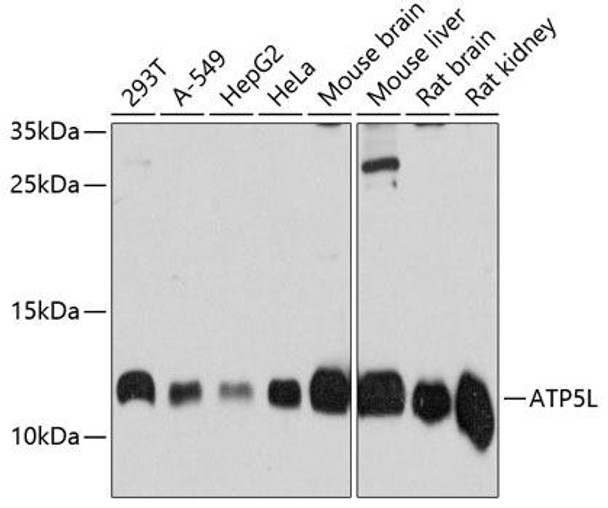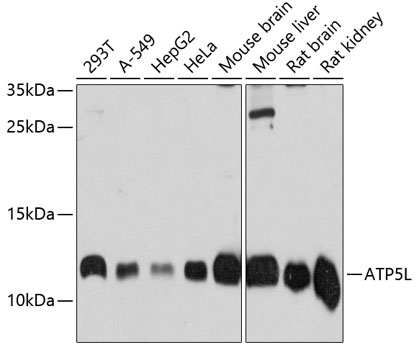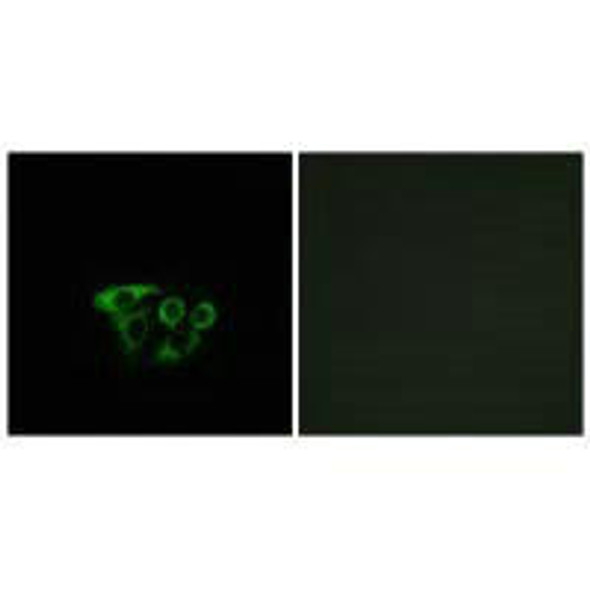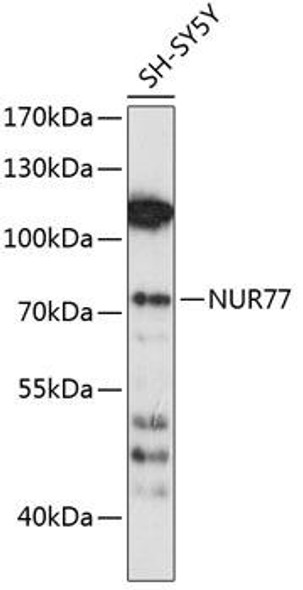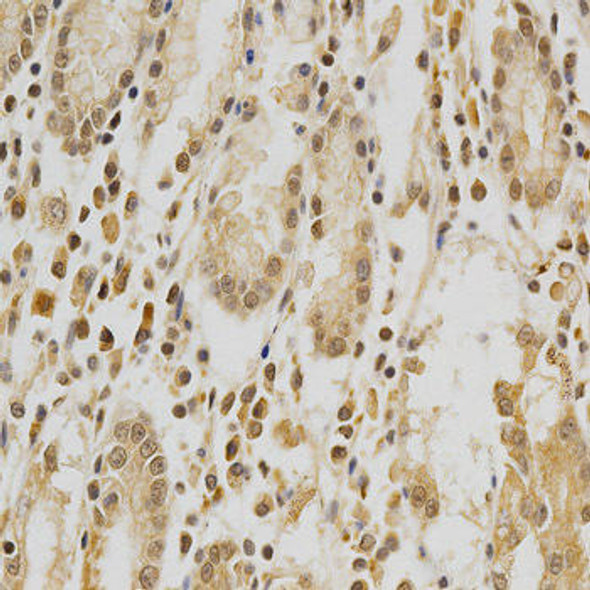Description
Anti-ATP5L Antibody (CAB9178)
The ATP5L Polyclonal Antibody (CAB9178) is a valuable tool for researchers studying ATP5L, a subunit of the ATP synthase enzyme complex involved in cellular energy production. This antibody, derived from rabbits, exhibits high reactivity with human samples and has been validated for use in Western blotting applications.ATP5L is essential for maintaining mitochondrial function and ATP production, making it a key player in cellular metabolism and energy regulation. Research into ATP5L can provide insights into various physiological processes, including bioenergetics, cellular respiration, and mitochondrial dysfunction in diseases like cancer and neurodegenerative disorders.
By targeting the ATP5L protein, this polyclonal antibody allows for the detection and analysis of ATP5L expression in different cell types and tissues, making it a versatile tool for studies in molecular biology, biochemistry, and mitochondrial research. Understanding the role of ATP5L in cellular energy production and metabolism is crucial for developing therapies targeting mitochondrial dysfunction and metabolic diseases.
| Antibody Name: | Anti-ATP5L Antibody |
| Antibody SKU: | CAB9178 |
| Antibody Size: | 20uL, 50uL, 100uL |
| Application: | WB |
| Reactivity: | Human, Mouse, Rat |
| Host Species: | Rabbit |
| Immunogen: | Recombinant fusion protein containing a sequence corresponding to amino acids 1-103 of human ATP5L (NP_006467.4). |
| Application: | WB |
| Recommended Dilution: | WB 1:500 - 1:2000 |
| Reactivity: | Human, Mouse, Rat |
| Positive Samples: | 293T, A-549, HepG2, HeLa, Mouse brain, Mouse liver, Rat brain, Rat kidney |
| Immunogen: | Recombinant fusion protein containing a sequence corresponding to amino acids 1-103 of human ATP5L (NP_006467.4). |
| Purification Method: | Affinity purification |
| Storage Buffer: | Store at -20'C. Avoid freeze / thaw cycles. Buffer: PBS with 0.02% sodium azide, 50% glycerol, pH7.3. |
| Isotype: | IgG |
| Sequence: | MAQF VRNL VEKT PALV NAAV TYSK PRLA TFWY YAKV ELVP PTPA EIPR AIQS LKKI VNSA QTGS FKQL TVKE AVLN GLVA TEVL MWFY VGEI IGKR GIIG YDV |
| Gene ID: | 10632 |
| Uniprot: | O75964 |
| Cellular Location: | Mitochondrion, Mitochondrion inner membrane |
| Calculated MW: | 11kDa |
| Observed MW: | 11kDa |
| Synonyms: | ATP5L, ATP5JG |
| Background: | Mitochondrial ATP synthase catalyzes ATP synthesis, utilizing an electrochemical gradient of protons across the inner membrane during oxidative phosphorylation. It is composed of two linked multi-subunit complexes: the soluble catalytic core, F1, and the membrane-spanning component, Fo, which comprises the proton channel. The F1 complex consists of 5 different subunits (alpha, beta, gamma, delta, and epsilon) assembled in a ratio of 3 alpha, 3 beta, and a single representative of the other 3. The Fo seems to have nine subunits (a, b, c, d, e, f, g, F6 and 8). This gene encodes the g subunit of the Fo complex. Alternative splicing results in multiple transcript variants. |
| UniProt Protein Function: | ATP5L: Mitochondrial membrane ATP synthase (F(1)F(0) ATP synthase or Complex V) produces ATP from ADP in the presence of a proton gradient across the membrane which is generated by electron transport complexes of the respiratory chain. F-type ATPases consist of two structural domains, F(1) - containing the extramembraneous catalytic core, and F(0) - containing the membrane proton channel, linked together by a central stalk and a peripheral stalk. During catalysis, ATP synthesis in the catalytic domain of F(1) is coupled via a rotary mechanism of the central stalk subunits to proton translocation. Part of the complex F(0) domain. Minor subunit located with subunit a in the membrane. Belongs to the ATPase g subunit family. |
| UniProt Protein Details: | Protein type:Transporter; Energy Metabolism - oxidative phosphorylation; Hydrolase; Membrane protein, integral; EC 3.6.3.14; Mitochondrial Chromosomal Location of Human Ortholog: 11q23.3 Cellular Component: mitochondrion; mitochondrial inner membrane; mitochondrial proton-transporting ATP synthase complex Molecular Function:ATPase activity; hydrogen ion transmembrane transporter activity; transmembrane transporter activity Biological Process: cellular metabolic process; mitochondrial ATP synthesis coupled proton transport |
| NCBI Summary: | Mitochondrial ATP synthase catalyzes ATP synthesis, utilizing an electrochemical gradient of protons across the inner membrane during oxidative phosphorylation. It is composed of two linked multi-subunit complexes: the soluble catalytic core, F1, and the membrane-spanning component, Fo, which comprises the proton channel. The F1 complex consists of 5 different subunits (alpha, beta, gamma, delta, and epsilon) assembled in a ratio of 3 alpha, 3 beta, and a single representative of the other 3. The Fo seems to have nine subunits (a, b, c, d, e, f, g, F6 and 8). This gene encodes the g subunit of the Fo complex. Alternative splicing results in multiple transcript variants.[provided by RefSeq, Jun 2010] |
| UniProt Code: | O75964 |
| NCBI GenInfo Identifier: | 51479156 |
| NCBI Gene ID: | 10632 |
| NCBI Accession: | NP_006467.4 |
| UniProt Secondary Accession: | O75964,Q96BV6, Q9UBZ7, A8K0K3, |
| UniProt Related Accession: | O75964 |
| Molecular Weight: | 11,428 Da |
| NCBI Full Name: | ATP synthase subunit g, mitochondrial |
| NCBI Synonym Full Names: | ATP synthase, H+ transporting, mitochondrial Fo complex, subunit G |
| NCBI Official Symbol: | ATP5L |
| NCBI Official Synonym Symbols: | ATP5JG |
| NCBI Protein Information: | ATP synthase subunit g, mitochondrial; ATPase subunit G; F1F0-type ATP synthase subunit g; ATP synthase g chain, mitochondrial; F1Fo-ATP synthase complex Fo membrane domain g subunit; ATP synthase, H+ transporting, mitochondrial F1F0, subunit g; ATP synthase, H+ transporting, mitochondrial F0 complex, subunit G |
| UniProt Protein Name: | ATP synthase subunit g, mitochondrial |
| Protein Family: | ATP synthase |
| UniProt Gene Name: | ATP5L |
| UniProt Entry Name: | ATP5L_HUMAN |

